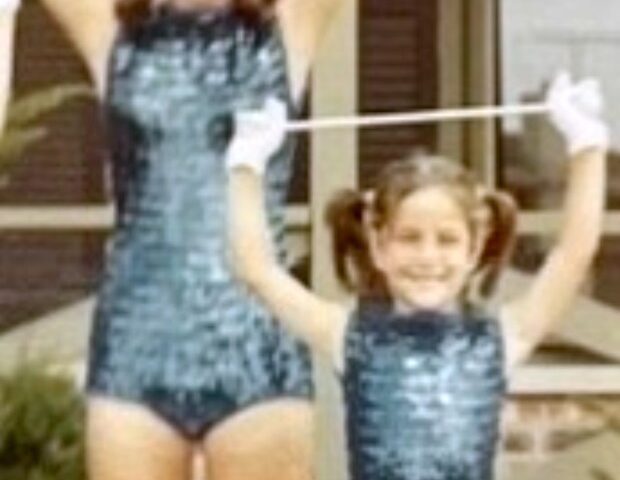Nearly a month after a 14-year-old allegedly shot a 15-year-old during a “teen takeover” in Streeterville, Chicago police last weekend were determined not to let the teens take over Streeterville again.
They deployed tactics both analog and digital.
The digital approach involved “geo-fencing” the neighborhood, east of Michigan Avenue and just north of the Chicago River, so no ride-share services would pick up or drop off in the targeted zone. One analog tactic involved erecting crowd-control fencing overnight Thursday that was removed Friday morning — well before the expected teen takeover could even take place. Chicago police still have not explained the mystery behind the up-and-down barricades.
Police working in groups patrolled Streeterville by foot. Officers also roamed the neighborhood in cars and transport vehicles.
The visible and invisible defense measures evidently had their intended effect: A measure of peace reigned for the weekend — though the intense presence of police unsettled some residents.
Point made by the Chicago Police Department: An all-hands-on-deck response evidently can inoculate one neighborhood, for one weekend. There was even no need for an earlier curfew, an idea pushed by Ald. Brian Hopkins, 2nd.
Even so, such a response could not be sustainable over time, much less scalable to cover neighborhoods citywide.
The Streeterville case study was on my mind this week as I read a new book by Jens Ludwig, co-founder of the University of Chicago Crime Lab. “Unforgiving Places,” which the Tribune excerpted two Sundays ago in the opinion section, is a primer on the roots of handgun violence in Chicago and other cities — as well as the mixed results from tactics intended to help address the urban bloodletting.
Shootings are down in Chicago from their recent peak in 2021 — as reported by the Chicago Police Department, the 102 homicides this year through April 13 are down nearly 40% from 2021, and nonfatal shootings are down nearly 55%.
Violent crime is down nationally since 2021. And Chicago’s decline also coincides with a laudable citywide response to a surge that peaked that year: more than $200 million committed by the city, state and private sector to violence-intervention measures; an anti-violence strategy developed by police Superintendent Larry Snelling; and block-by-block activity by crime interrupters, neighborhood watch groups and others who bravely wrestle with the problem in the streets.
Ambitious as all those measures are, though, the fact remains that Chicago still suffers from a far higher rate of violent crime per capita than either New York or Los Angeles — two urban centers with challenges not unlike Chicago’s.
In a sense, the chaotically choreographed show of force in Streeterville last weekend might serve as a metaphor for the state of the current response to Chicago’s crime wave. There is a certain throw-everything-at-it aspect to the efforts to curb violent crime. Each measure is laudable, but they can lack coordination, are not always driven by reliable data and need to be undertaken more strategically than have been managed to date.
At the heart of the challenge, as described by Ludwig, is the nature of violent crime itself. Common explanations for the causes of handgun violence — from “super predators” and gang turf wars to retribution for past violence — all play some role. But those pathologies do not begin to explain the root causes of the problem.
Getting to the causes starts with understanding how human nature factors in. The preponderance of shootings, Ludwig finds, result from impetuous, unplanned, almost reflexive responses by young people, mostly men, to the hostile environments they live in. In those unforgiving places, a single misstep can lead to violence and death.
Especially in neighborhoods where young people commonly carry guns, a cross look from a stranger, a grudge carried into a street party or a challenge to a young person’s pride can lead to what Ludwig and some social scientists have identified as the 10 minutes of a person’s life that can lead to death for the victim — and a life-altering prison term for the assailant.
A variety of crime-reduction tactics have worked, and nearly as many rational-sounding approaches have failed. Zero-tolerance policing often backfires, Ludwig writes. But the “pocket parks” some cities use to replace vacant lots almost always reduce crime, data shows.
To make his assessments, Ludwig uses behavioral economics, a field of study that seeks to determine the psychological reasons people make irrational decisions. He points out areas in which behavioral economics conflict with commonsense assumptions about crime: Police activity aimed at preventing violence is more effective than making arrests after a shooting; data does not establish a direct correlation between job creation and violence reduction; letters of apology and other restorative justice tactics effectively prevent subsequent violent acts.
Perhaps Ludwig’s most telling finding is his comparison of adjacent South Side neighborhoods separated by Dorchester Avenue — Greater Grand Crossing to the west, with one of the highest homicide rates in the city, and South Shore to the east, where the rate of violent crime is about half as high.
The people living in the two neighborhoods have much in common. Household incomes are virtually identical, for example. The big difference: The concentration of housing and businesses in South Shore is higher than in Grand Crossing. There are more eyes on the street, more human activity, which creates social cues that prompt people to restrain impulses that lead to violent crime.
Ludwig offers no magic wand to cure Chicago’s violent crime problems. But his book makes clear that human connection, human interaction and the development of a sense of community could be among the most successful antidotes — and a good place to start.
David Greising is president and CEO of the Better Government Association.
Submit a letter, of no more than 400 words, to the editor here or email letters@chicagotribune.com.



